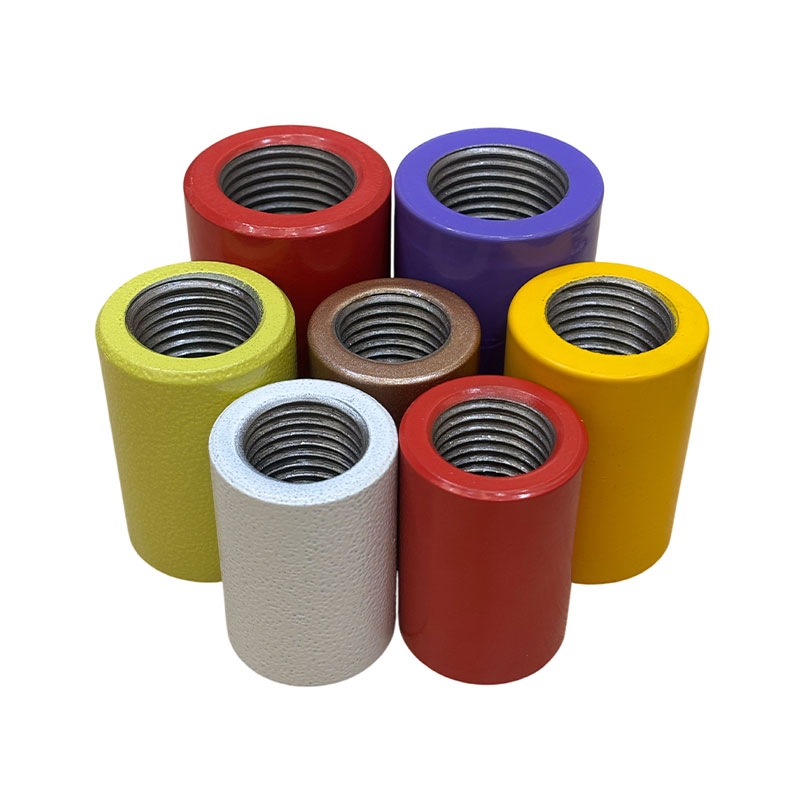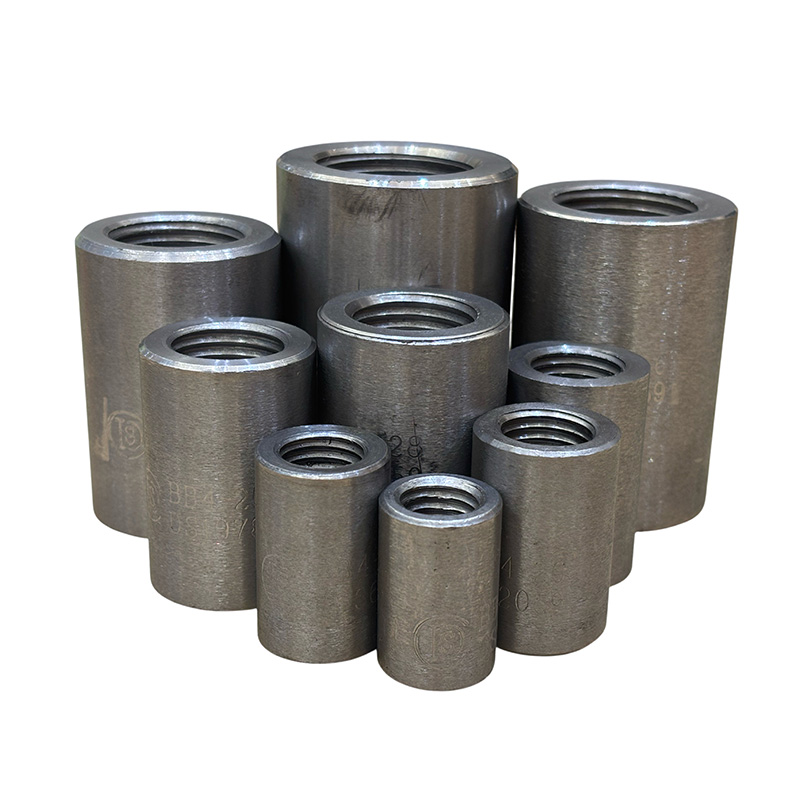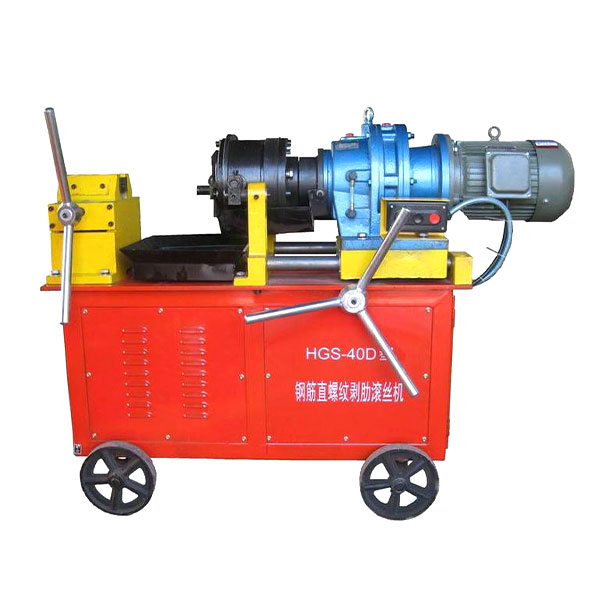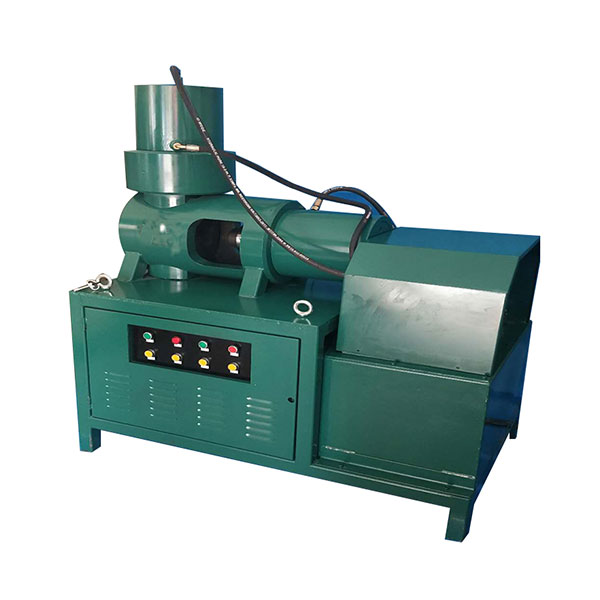How to Connect Rebar Without Welding or Wire?
In construction, rebar connection is vital for structural stability, but traditional welding and wire tying have flaws. Welding needs professionals, has complex processes, stops in bad weather, and high heat harms rebar performance. Wire tying is easy but labor-intensive and prone to loosening, riskier in big projects. So, how to connect rebar without welding or wire tying is urgent for constructors. The rebar coupler connects two rebars mechanically longitudinally, forming a solid joint and avoiding traditional drawbacks.
This article focuses on rebar coupler, covering types, installation and advantages to answer key questions.
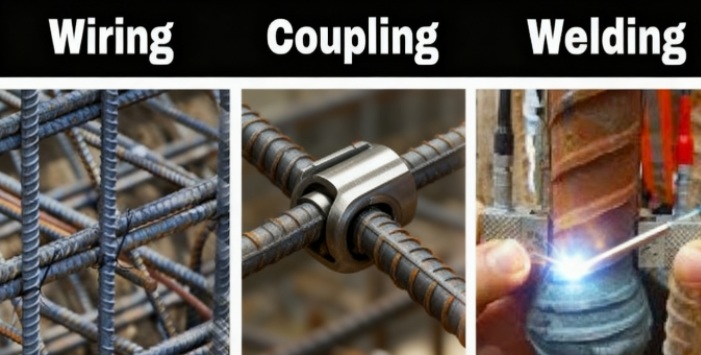
Table of Contents
Why Rebar Couplers Are the Preferred Option?
1. Completely Solving Inherent Flaws of Traditional Connections
Compared with traditional welding, the rebar coupler has distinct advantages. It skips tedious preheating and cooling, and is unaffected by rain, snow or strong winds—enabling normal construction in northern winters or southern rainy seasons, breaking weather limits. With mechanical connection, no high-temperature heating avoids the heat-affected zone on rebars, protecting their original mechanical properties and eliminating performance degradation from welding.
For wire tying, it needs no manual winding, cutting labor input and costs. Its stable mechanical joints avoid loosening or falling-off issues of wire tying, resolving instability risks and ensuring reliable connection.
2. Accurately Meeting Modern Construction Needs
As high-rises, long-span bridges and subways increase, rebar strength demands rise. The coupler fits high-strength rebars like HRB400/HRB500, with much higher connection strength than traditional methods, meeting complex projects’ safety needs.
In narrow spaces like beam-column joints, it has a compact design—avoiding rebar protrusion and construction congestion caused by welding/wire tying, boosting efficiency.
Common Types of Rebar Couplers
Straight Threaded Rebar Coupler
As one of the most widely used types currently it processes rebar ends into precise threads through the rib-stripping and thread-rolling process. Two processed rebars are directly screwed into the coupler mechanically to finish the connection. The whole installation needs no complex equipment. It enables easy operation and fast connection speed which effectively improves construction efficiency. It is compatible with rebars of most diameters working for small-diameter ones in ordinary civil buildings and large-diameter ones in industrial plants or subway projects to ensure stable connection. So it is widely used in large-scale housing construction subways highways and other projects especially those with high construction progress requirements.
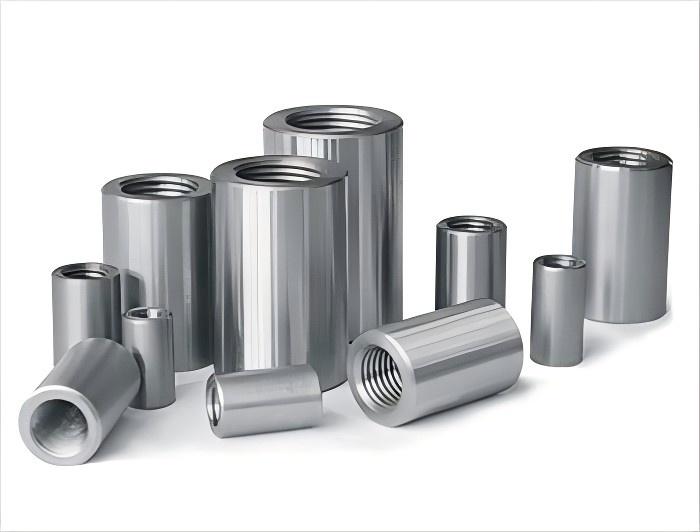
Cold Extrusion Rebar Coupler
It adopts the cold extrusion process. Special extrusion equipment squeezes the coupler and rebar to make them bite tightly and form a solid joint. This method needs no heating which avoids rebar performance changes caused by high temperature. It has extremely high connection strength and excellent fatigue resistance and can maintain stability under long-term stress. It is particularly suitable for projects needing high structural durability. Bridge projects bear long-term vehicle loads and environmental erosion while tunnel projects face complex geological conditions and stress. Using this coupler ensures long-term structural stability and safety so it is often used in key infrastructure like bridges tunnels and water conservancy hubs.
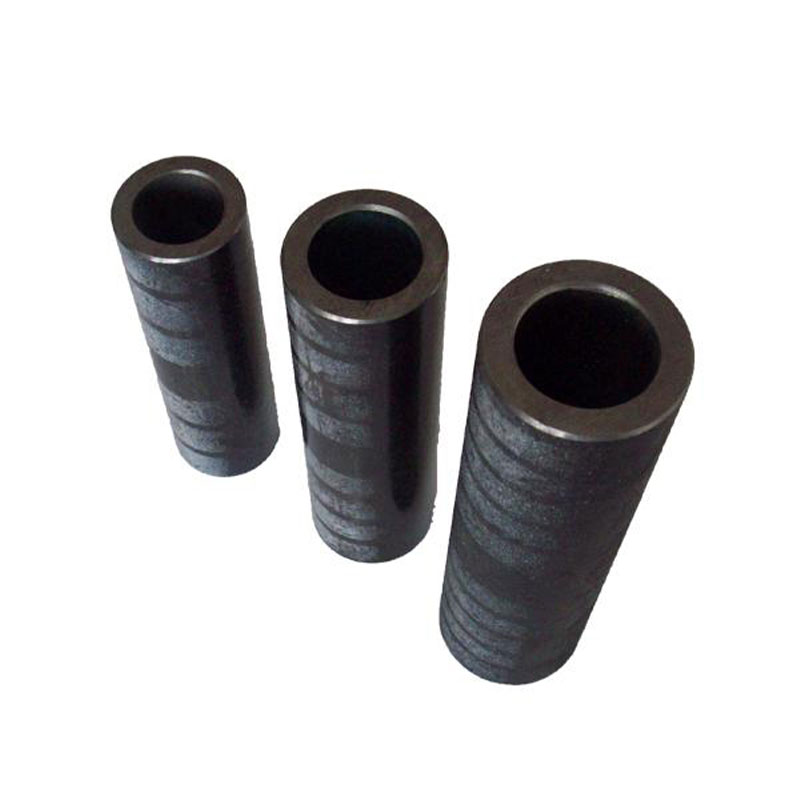
Epoxy Resin Rebar Coupler
Its notable feature is a built-in anti-corrosion coating. Made of high-quality epoxy resin the coating has strong corrosion resistance. It can resist erosion from harsh environments such as humidity salt alkali and chemical corrosion on the coupler and rebar which extends the service life of the rebar connection part. It is mainly used in corrosion-prone projects. Underground garages stay in humid environments long making rebars easy to rust coastal buildings suffer from seawater salt erosion causing more serious rebar corrosion and chemical plants have surrounding chemicals that also corrode rebars. Using this coupler in such projects solves corrosion problems and ensures structural safety and durability.
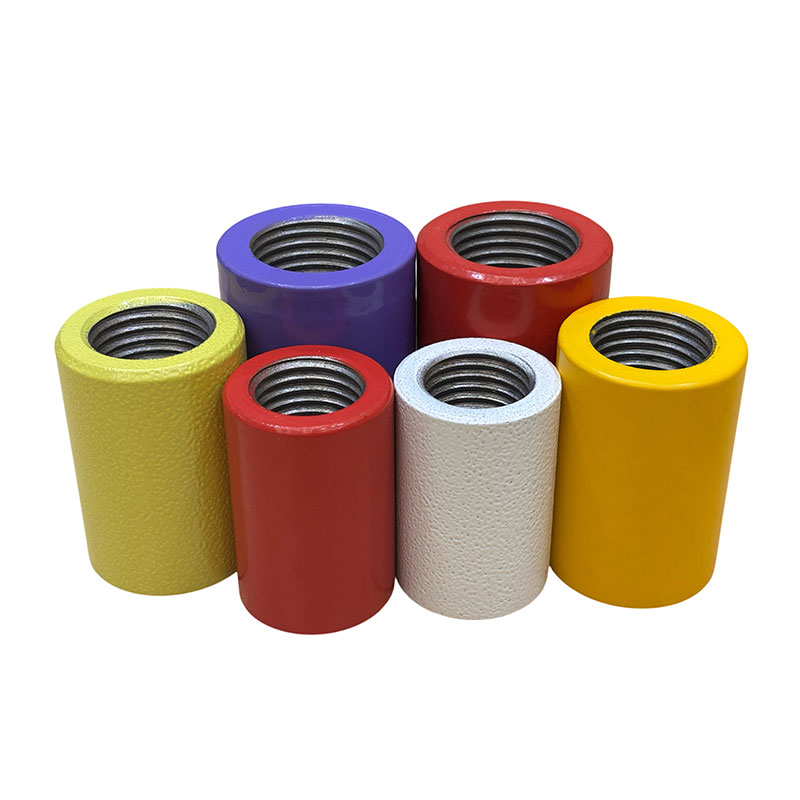
Installation Process of Rebar Couplers
Preparatory Work
Adequate preparation is essential for connection quality before installing rebar couplers. First, check the flatness of rebar ends. If there are defects like bending, burrs or a horseshoe shape, trim them with special tools to ensure flatness, preventing uneven ends from affecting thread processing accuracy or extrusion effect. Second, select a coupler of matching model based on rebar diameter. Ensure the rebar diameter fully matches the coupler specification; a mismatch causes unstable connections and safety hazards. Meanwhile, inspect the coupler’s appearance for cracks, deformation or rust to confirm it meets quality standards.
Core Installation Steps
Step 1: Process threads on rebar ends. Use a rib-stripping and thread-rolling machine (e.g., HGS-40D) for rib stripping and thread rolling. Adjust machine parameters by rebar diameter to ensure the thread’s profile, pitch and length meet design and industry standards. After processing, test threads with a go-no-go gauge; a qualified thread allows the go gauge to screw in smoothly and the no-go gauge to screw in no more than 3 teeth.
Step 2: Connect the first rebar. Tighten one end of the straight threaded coupler to the first threaded rebar. Use an ordinary wrench for initial tightening, then a torque wrench to finalize per the project’s specified torque (e.g., 200N・m for 25mm-diameter HRB400 rebar). Follow design requirements and industry specs, then recheck with the torque wrench.
Step 3: Connect the second rebar. Screw the second threaded rebar into the coupler’s other end. Initially tighten with an ordinary wrench, then finalize with a torque wrench per specs. Observe the fit to ensure no looseness or gaps, then recheck torque to confirm tightness; the connection is complete.
You can click here for watching installation video.
Quality Control Points
Post-installation quality control is critical for structural safety. First, conduct torque tests: use a torque wrench to check each connection’s torque. Retighten if insufficient; inspect and replace the coupler/rebar if excessive. Second, perform visual inspections: check for coupler cracks/deformation, rebar thread damage and ensure tight connections with no gaps. Additionally, conduct sampled inspections: test joint mechanical properties (tensile strength, yield strength) to meet standards. Strict control prevents human-error-related quality issues and ensures reliable connections.non-human elements.
Practical Advantages of Rebar Couplers
Efficiency Improvement
Compared with traditional welding, rebar couplers increase construction speed by over 50%. Unaffected by rain, snow, low temperatures and other weather conditions, they enable 24-hour continuous operation, completely breaking weather restrictions on rebar connection work. Their operation process is simplified — no complex training period for professional welders is needed, and ordinary workers can get started after simple guidance. This greatly reduces construction preparation time, effectively shortens the overall schedule, and is especially suitable for large-scale projects with tight deadlines.
Strength Guarantee
The strength of connections made by rebar couplers is much greater than traditional methods. In accordance with industry-wide testing standards certified products can achieve an abrasion strength that is over 1.1 twice the power of base material. They can easily adapt to high-strength rebars like HRB400 and HRB500 that meet the safety requirements of structurally complex structures like high-rises and bridges. As mechanical connections are used it is not a heating-affected zone created by high-temperature welding. This prevents the local degradation in performance of rebars. This significantly improves the strength of the structural and fatigue resistance as well as providing long-term stability to the structure from the beginning.
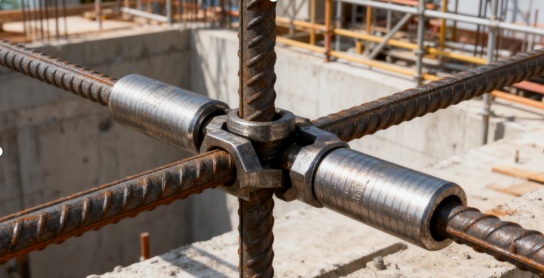
Cost Optimization
Although the purchase cost of a single rebar coupler is higher than that of wire ties, it has significant cost advantages when calculated from the overall project perspective. On one hand, no professional welders are required — ordinary workers can operate, reducing labor costs by 30%-40%. On the other hand, no welding length needs to be reserved, reducing rebar waste. Based on the calculation of conventional project scale, 10%-15% of rebar consumption can be saved. Overall, using rebar couplers can reduce the total project cost by 10%-15%, achieving the dual benefits of cost reduction and efficiency improvement.
Final Words
Against the backdrop of the construction industry’s continuous pursuit of efficient, safe, and low-cost construction, rebar couplers have completely transformed the landscape of traditional rebar connection with their advantages of no welding and no wire tying. If you are choosing a suitable rebar coupler, come to Chongqing Huigong immediately to select the one that fits your project.

